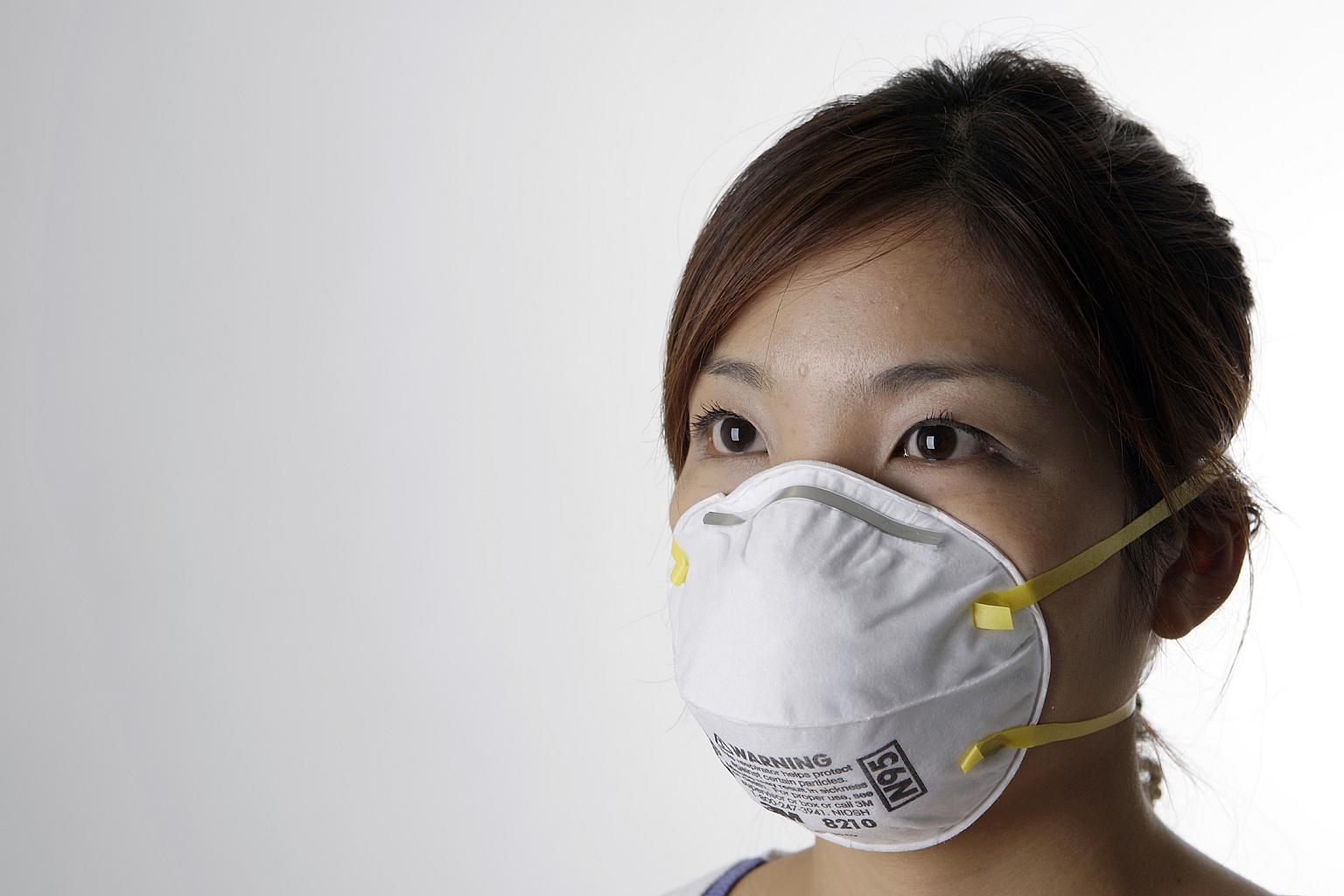The haze is back: Tips on buying masks and air purifiers
Sign up now: Get ST's newsletters delivered to your inbox

A woman wearing a N95 mask.
ST PHOTO: NEO XIAOBIN
Follow topic:
This story was first published in The Straits Times on June 1, 2014.
How to choose the right mask
Masks are available at major pharmacies and supermarkets such as Unity, Watsons, Cold Storage and FairPrice.
The Government's haze microsite (www.haze.gov.sg) identifies two categories of masks designed to reduce exposure to airborne contaminants such as particles and gases.
The first is the N95 mask, which is certified to have 95 per cent filter efficiency by the United States National Institute for Occupational Safety and Health.
They come in different brands, colours, shapes and sizes. For example, a box of 20 N95 masks, which have adjustable noseclips and soft nose foam, is selling for $43 at FairPrice Xtra outlets.
The second type is the EN-149 mask, which meets a type of European standard for respiratory masks. These can filter 80 to 99 per cent of airborne dust particles.
They can be bought through the websites of their distributors, such as Greenham Safety & Workplace Supplies (www.greenham.com). A pack of 20 Keep Safe FFP2 moulded respirators costs £16.30 (S$34) from Greenham.
If you want a customised mask, approach home-grown company Dream Lab One, which makes Totobobo masks. Made of flexible plastic, they can be cut to fit different face shapes. They also come with filters which can trap 92 to 96 per cent of fine dust and particles.
Dr Albert Lim, a consultant at Tan Tock Seng Hospital's department of respiratory and critical care medicine, says normal surgical masks can protect the wearer's nose and mouth from irritants in the air and are probably more comfortable to wear.
But these are not effective in filtering fine particles, which are what people should be worried about during the haze. Temporary exposure to these particles can cause discomfort in the throat, nose and eyes.
Prolonged exposure - of at least several hours - can potentially aggravate existing chronic lung disease or heart disease.
Dr Lim says: "People who find it hard to breathe while wearing the N95 mask can take it off at regular intervals for 'breaks'. They should also find a mask which fits them to reduce the sensation that it is difficult to breathe.
"If the N95 mask doesn't fit, they may want to consider alternatives such as the EN-149 masks."
How to choose the right air purifier
When shopping for an air purifier, consider the size of the room it is meant for and what you want it to do.
Purifiers are available at major appliance stores and can cost from $99 to more than $1,000 each.
The appliance has a stated area of coverage - typically between 15 and 70 sq m - which indicates the area in which it can clean the air effectively.
As a rough guide, a new three-room Housing Board flat is slightly smaller than 70 sq m.
In general, most air purifiers can remove dust particles.
Some also come with functions such as humidifying the air to relieve sinus problems and ionising the air to remove bacteria and viruses.
The Government's haze microsite (www.haze.gov.sg) says the main air pollutant during bouts of haze in Singapore is particulate matter. Other pollutants include sulphur dioxide, ozone, nitrogen dioxide and carbon monoxide.
Dr Philip Koh, 49, a general practitioner who is also chairman of the medical board at Healthway Medical Group, advises consumers looking to buy an air purifier to get one equipped with a high efficiency particulate air (Hepa) filter.
"Only these can get rid of particles of 0.1 to 0.3 microns in size," he says.
There are at least 17 brands of purifiers, such as Airion, Blueair, Coway, Daikin, Europace, Hitachi, Honeywell, Nanoe, LG, Mistral, Novita, Panasonic, Philips, Rowenta, Samsung, Sharp and Toshiba.
A spokesman for Courts says there should ideally be one air purifier in each bedroom and one in the living room.
For example, a four-room Housing Board flat with an area of 90 sq m should have one air purifier with a 40 sq m coverage in the living room and a purifier with a 21 sq m coverage in each of the three bedrooms.
Ms Joey Feng, 29, sales director of Air & Odor Management, an indoor air quality company, says that to maximise a purifier's efficiency, filters should be cleaned or serviced once every two to three months.
She adds that when using an air purifier, its air intake and output should not be obstructed by furniture or walls.
Doors and windows should also be closed for best results.
Those looking to buy a purifier can also check out the National Environment Agency's website - it has compiled a list of portable air cleaners for smoke haze.
The list is not exhaustive.

